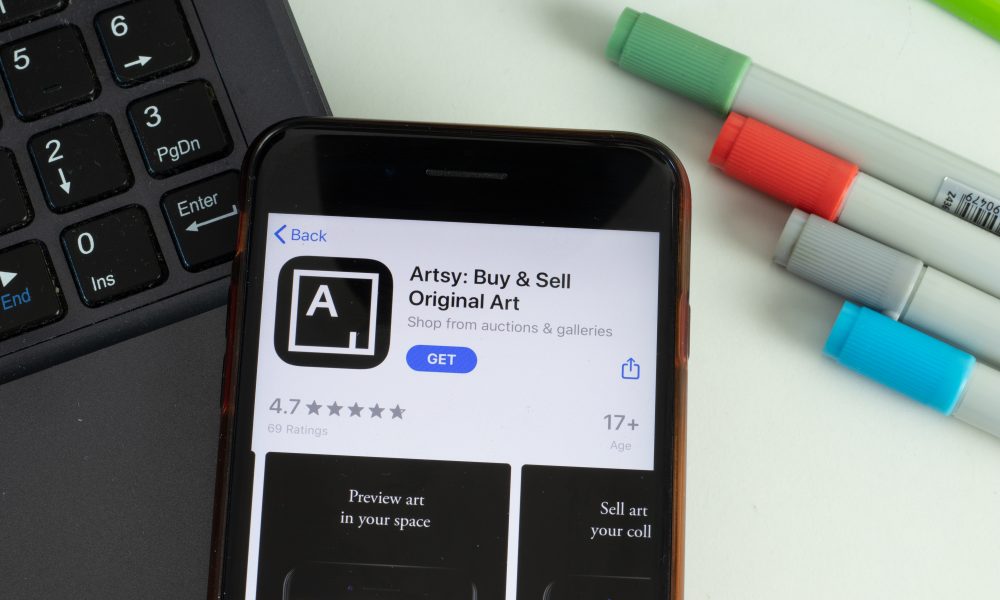The ongoing pandemic has not stopped collectors from acquiring art from both new and established artists around the globe. Galleries and auction houses, like many markets, increasingly have moved to online and mobile platforms, expanding their footprints through global eCommerce marketplaces.
Providing consumers with simple, secure and transparent cross-border payments is a top priority for marketplaces such as New York-based online brokerage Artsy, which sells art for leading galleries, auction houses and museums worldwide. Bringing these historically brick-and-mortar players online is an ongoing challenge, however, even as more buyers seek this channel. Ensuring frictionless cross-border payments for such high-ticket items is vital for both the selling and the buying sides of these transactions.
“Galleries and auction houses have built their businesses based on an in-person model, and the art world in general is not known for its transparency or for its openness,” Artsy Chief Revenue Officer Dustyn Kim told PYMNTS in an interview. “So, it’s been an ongoing effort to shift our partners’ behaviors toward a more open and more flexible mindset.”
Kim described how Artsy has risen to this challenge, uniting brick-and-mortar art dealers with mobile-savvy consumers to create a booming global business while effectively addressing cross-border payment frictions.
The Challenges of Building a Cross-Border Online Art Marketplace
Kim explained that dealers’ traditional resistance to selling online has been a hurdle for Artsy, but pandemic-driven restrictions served to lessen this obstacle.
“If [galleries and auction houses] want to grow their business, they need to meet their buyers where they’re at,” she said. “Sellers now realize that ‘online’ does not mean that their physical presence or [in-store] experience goes away. [Buyers want] more information; they want to know the price; they want to be able to click a button and buy it.”
The pandemic not only accelerated the digital shift of galleries and auction houses but also brought a dramatic increase in people buying art online, including a surge in newbie art buyers. Younger buyers in particular grew up with the internet and are comfortable shopping online for everything from groceries to home furnishings, so art was not a far stretch.
“We had existing buyers — people who already know about the art world and love our art — coming online because they were now working from home and wanting to fill their walls,” Kim said. “We also saw a lot of new buyers, and over the course of last year, our galleries reported that 70% of their buyers from Artsy were new to the gallery.”
Artsy’s eCommerce sales grew 2.5 times in 2020, and more than 2 million collectors and art enthusiasts currently use the platform. The vast majority of Artsy’s sales activity is completed via mobile app, reflecting the digital transition of consumers at large.
“There’s a strong preference for mobile, so [we] built [the platform] with an app-first mentality,” she said. “We just did a survey of collectors and younger collectors in particular. Two-thirds of those collectors reported purchasing art via their phones. So, I’d say mobile is the leading [channel, not only] for discovering and researching the art, but also [for] actually clicking that ‘Buy It Now.’”
Addressing Payment Frictions to Build Consumer Trust and Ease of Use
Most art galleries and auction houses are small- to medium-sized businesses (SMBs) that do not have the resources to address the technical issues of establishing an online presence. Artsy enables them to migrate online without having to tackle these headaches.
“Galleries and auction houses, many of the smaller auction houses in particular, have more of a technical challenge when they try to do it on their own,” Kim said. “So, when they’re trying to set up their own websites, figure out their own online payment processing systems and implement their own cybersecurity, it can be very overwhelming.”
To process the full transaction from payment to delivery, Artsy’s payment processing system integrates with third-party partners for shipping and tax calculations, particularly for international invoice compliance. Artsy also has put home-grown security protocols in place while working with outside cybersecurity firms to ensure Artsy is a trusted and secure marketplace.
“In the case of our auctions, for example, we are vetting buyers on the platform, and, depending on the level that they’re bidding at, we’re actually doing pretty rigorous financial vetting as well,” Kim said.
Credit cards make up Artsy’s primary online payment mechanism, yet its customer support team will step in and manually help with other types of transactions as well. Kim said the platform is looking to offer additional options, such as PayPal, and make escrow and wire transfers more widely available. Currently, all cross-border payments are made in U.S. dollars, but the ability to both list and transact in various currencies is on the product roadmap for the near future, she added.
Kim acknowledged that Artsy sees cart abandonment on eCommerce sales channels and, in that case, seeks to learn more about why customers changed their minds.
“We will have people [who] actually reach out to work with art collectors to better understand what happened,” she explained.
Kim said she sees the ongoing intersection of brick-and-mortar and digital sales as a win-win that will continue to grow the art marketplace business.
“That [intersection] actually serves to further grow the art market, without one [platform] taking away from the other,” she said. “People will go to a gallery or shop at an art fair, but then want to complete the transaction on their phone because that is simply where all their information is and where they are used to purchasing everything else in their life.”
The trend of buying art online certainly will continue post-pandemic, and consumer expectations will grow with it. Marketplaces such as Artsy can expect to thrive as they strive to create ever-more-seamless experiences in the evolving cross-border landscape.







